Glasgow School of Art dismantling to take eight weeks
- Published
Fire-damaged walls are being dismantled brick by brick
A brick-by-brick dismantling of unsafe sections of the Mackintosh building at the Glasgow School of Art will take at least eight weeks, engineers have said.
Dominic Echlin, who is leading the project, said the building was in a dangerous condition after the devastating fire last month.
Work has now begun to remove masonry at high levels to prevent collapse.
Mr Echlin said the aim was to make it was safe enough to reduce the exclusion zone around the building.

Dominic Echlin is the man in charge of dismantling the art school
The Category A-listed building in the city centre, which was seen as architect Charles Rennie Mackintosh's masterpiece, was ravaged by fire on 15 June.
All the floors and the roof were destroyed leaving just the outer shell of Mackintosh's landmark building, which was completed by the Glasgow designer in 1909.
A survey showed that the masonry of the building was significantly damaged and out of line, with large sections in danger of collapse.
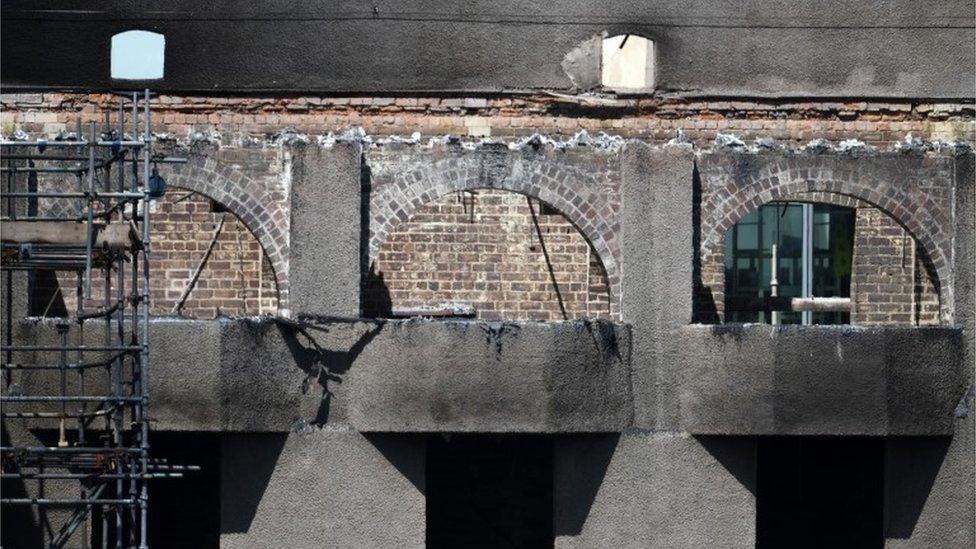
The building will be dismantled brick by brick
Mr Echlin, of David Narro Associates, said the aim of his work was to remove the unsafe main storey at high levels in the critical areas of the building.
He said: "That will allow us to get the streets open again and people back into their homes and businesses.
"That would also enable us to do the follow-on work within the body of the building."
Mr Echlin said surveys had shown where the key areas of damage were in the building structure.
Work to remove masonry is beginning in the middle of the south facade because it is the easiest area to access, he said.
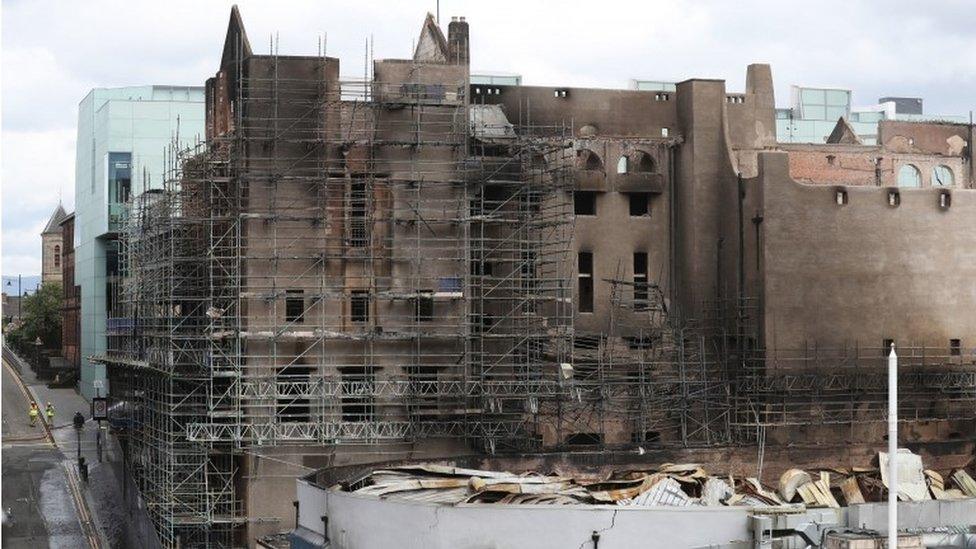
Work on the west side of the south façade will be influenced by the stability of the ABC O2 music venue
Engineers will then move on to the south east corner and the east facade.
Work on the west side of the south facade and the west gable will be influenced by the stability of the ABC O2 music venue, which was also devastated in the fire.
The structural engineer said the masonry and brickwork would be dismantled in a controlled manner, "brick by brick, block by block".
The heavier high-level stonework will be removed and transferred via hoists which will then be lowered down to street level for sorting and storage off site.
Where possible plainer areas of facades will be lowered into the site for later removal.
The work will carried out using a combination of Mobile Elevated Working Platforms (MEWPs) and crane hoists.
Mr Echlin said: "We need to bring the walls down in a controlled and even way to maintain the safety of the people carrying out the work and also to make sure we don't risk and uncontrolled collapse of the structure.
"Some parts of it are severely damaged and significantly out of line."
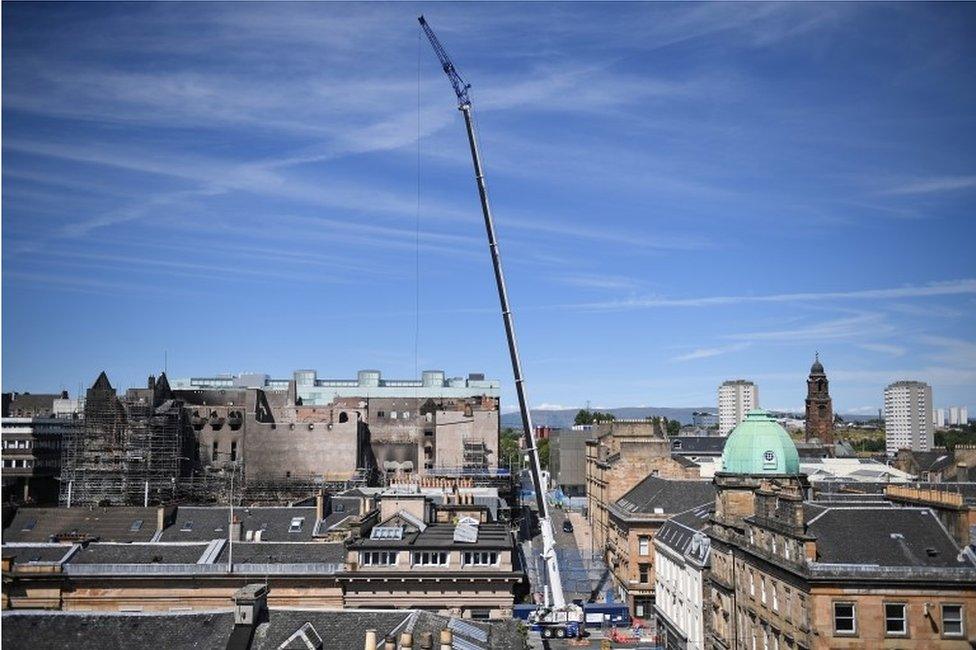
The main crane is positioned in Sauchiehall Street at the junction with Dalhousie Street

The engineer said the "sequencing" of the work was important so that removing bricks in one area did not destabilise others.
Mr Echlin said the first stage of the project would take at least eight weeks.
He said: "The aim of that is to get us to a point where we have removed the risk from that high-level masonry for the wider exclusion zone."
When the work is completed Glasgow City Council Building Standards will assess whether it is possible to reduce the size of the exclusion cordon.
- Published28 June 2018
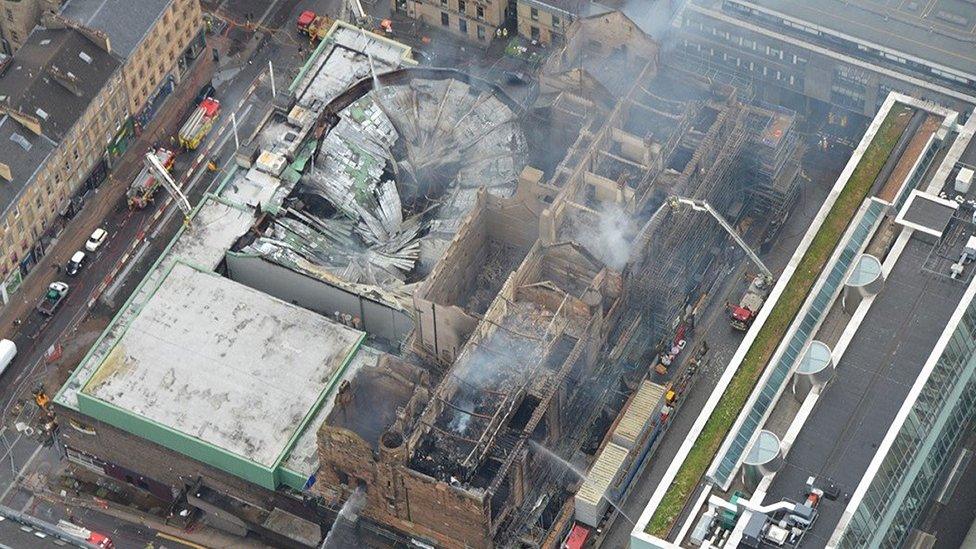
- Published1 July 2018
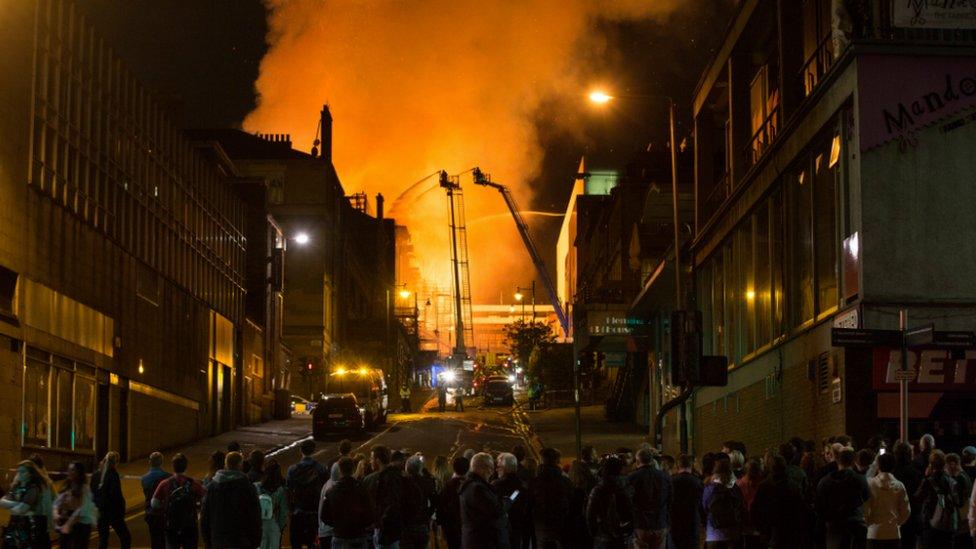
- Published17 June 2018
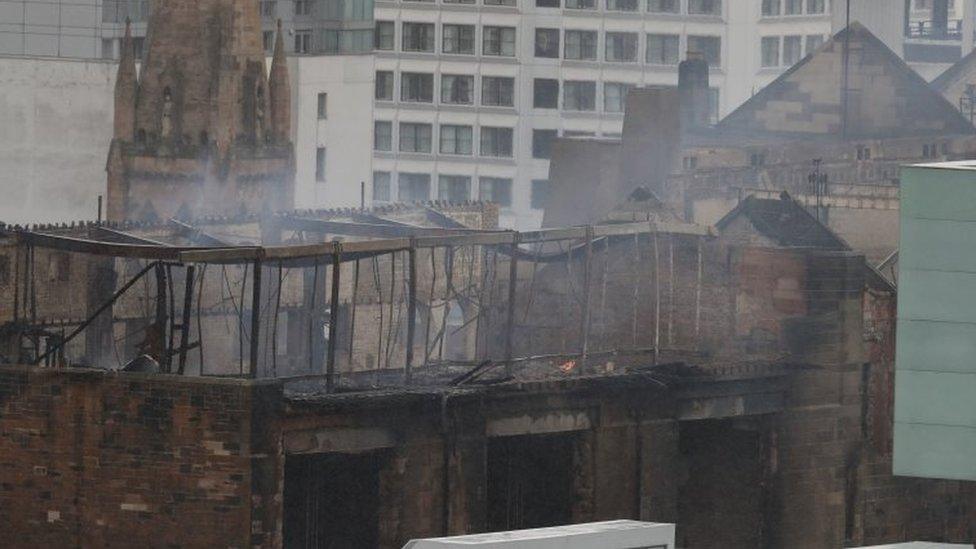
- Published3 July 2018
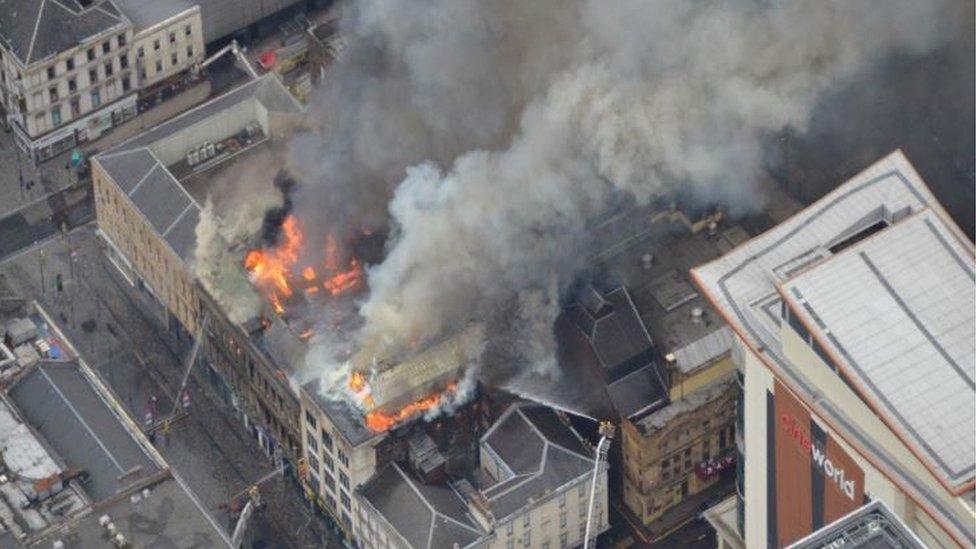
- Published21 June 2018
